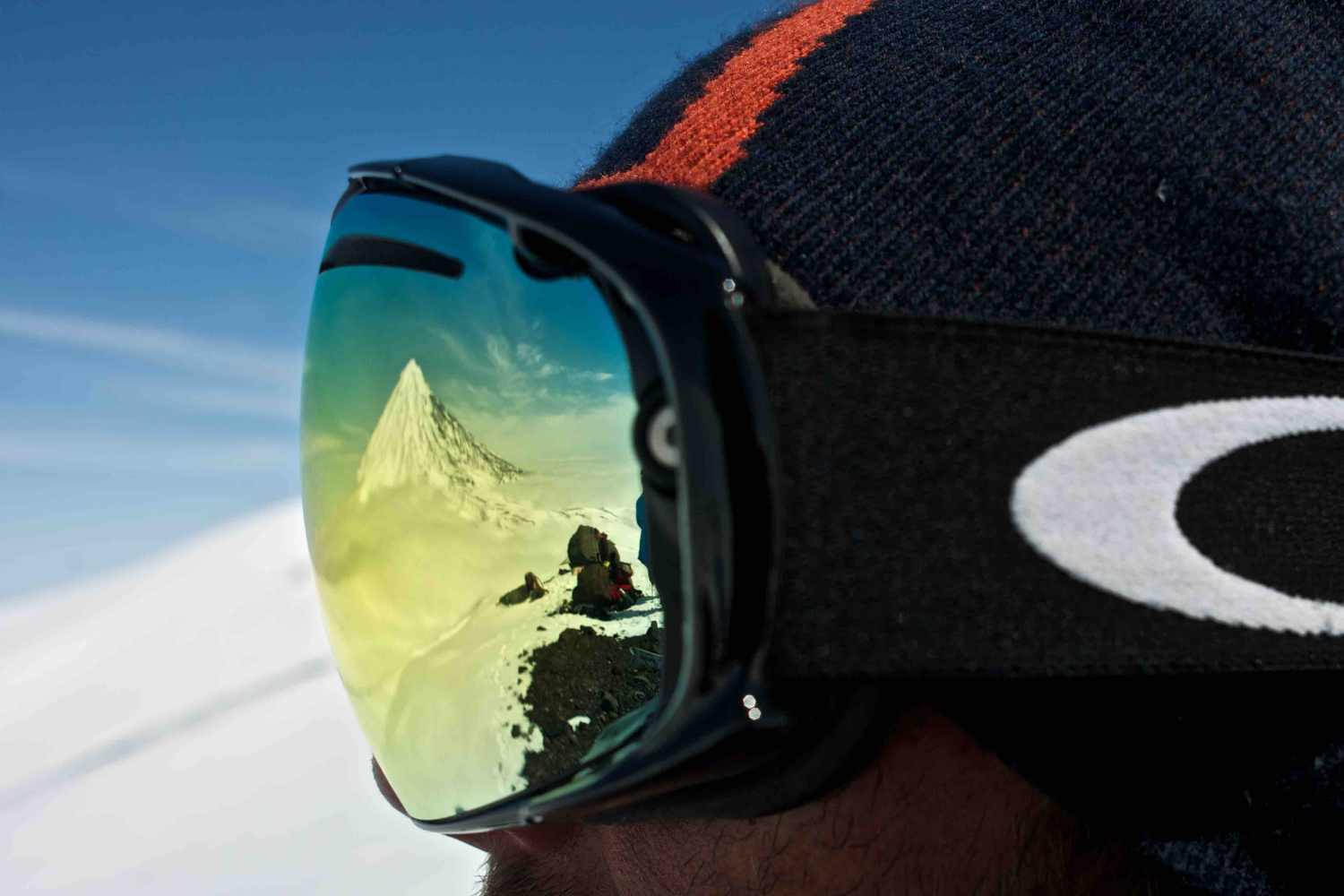This website uses cookies to ensure you get the best experience on our website. To read our full cookie policy please click here.
Martin Hartley: Passion to preserve the planet
Photographer and veteran polar explorer Martin Hartley has spent more than 400 days on polar expeditions in the Arctic and Antarctic. His life and passion is to document and preserve our planet and he is currently preparing for his next trip to gather vital information on the future of the Artic sea ice.
We are lucky enough to have teamed up with this extraordinary inspirational explorer, who has agreed to be an ambassador for EcoSki and earlier this summer we caught up with him to ask a little bit more about his life and work.
All images: Martin Hartley
Interview by Abigail Butcher
ES: Tell us about the project that you’re working on.
MH: It’s called The Last Ice Sentinels and I’ll be tracking the position of the oldest sea ice in the Arctic. Not icebergs, which are fresh water, but the multi-year sea ice that is responsible for reflecting solar radiation back to outer space, a phenomenon called the albedo effect. When the ice sheet is healthy it can reflect 85-87% of the sun’s radiation — so it’s not difficult to imagine what will happen when that ice sheet is gone and how much more heat from the sun is going to be absorbed by earth.
Over 2,000 miles of skiing in the Arctic Ocean I’ve only ever seen the biggest and oldest ice once or maybe twice — we have an idea but no firm data on where it is.
Scientists aren’t clear about how the Arctic Ocean is being affected by the global weather change — there’s a lack of concrete information. There’s a lot of theory but it’s difficult to predict its life expectancy and the data we gather on The Last Ice Sentinels will give a much clearer view on how long the ice will be there.
Accurate data will help put more pressure on governments and industry to understand and make changes faster. At the moment it’s still all a bit fluffy — it could be gone in 30, 50 or 90 years.
ES: So how did the idea to document multi-year sea ice come about?
MH: It was during an Arctic expedition with the European Space Agency in 2017. We were dropped off 200 miles east of the North Pole, on the Siberian side of the Arctic, and measured snow depths while skiing a route back to the North Pole given to us by the NASA’s Operation IceBridge. Normally you’d see all kinds of features there — open water, first-year ice, second-year ice, some multi-year sea ice that’s older as well as pressure ridges where two ice sheets have collided together, but we saw nothing like that over 200 miles. It just looked like a frozen lake that had formed that winter and would be water next summer — it was a massive shock.
So I started researching where the oldest sea ice hangs out, and there’s a tiny place called Lincoln Sea, where it is congregating around the northern most point of Canada. When I went online looking for photos of it there’s nothing, so I thought it must be documented before it’s all gone, which may be in the next ten years, if not sooner. It’s frightening.
ES: What will you actually be doing and who with?
MH: I’m going with Australian scientist Dr Adrian McCallum, an amazing polar guide I’ve worked with on three expeditions called Ann Daniels and an ex Royal Marine who is our extra muscle. The plan is to get dropped off in Northern Greenland and ski back to Canada following a line where scientists think the multi-age sea ice is most likely to be, literally joining the dots. I’ll be photographing them, tagging their position and leaving a tracker. We’ll take samples from the interface where the ice finishes and water starts which will give us a lot of information about the health of the ecosystem of the Arctic Ocean. We’ll be measuring ice thickness as well as gathering a few other funky bits of data.
When we go depends on when I’ve raised the $1million we need for it — most likely in 2023. We’ll cover about 350 miles which should take around five weeks.
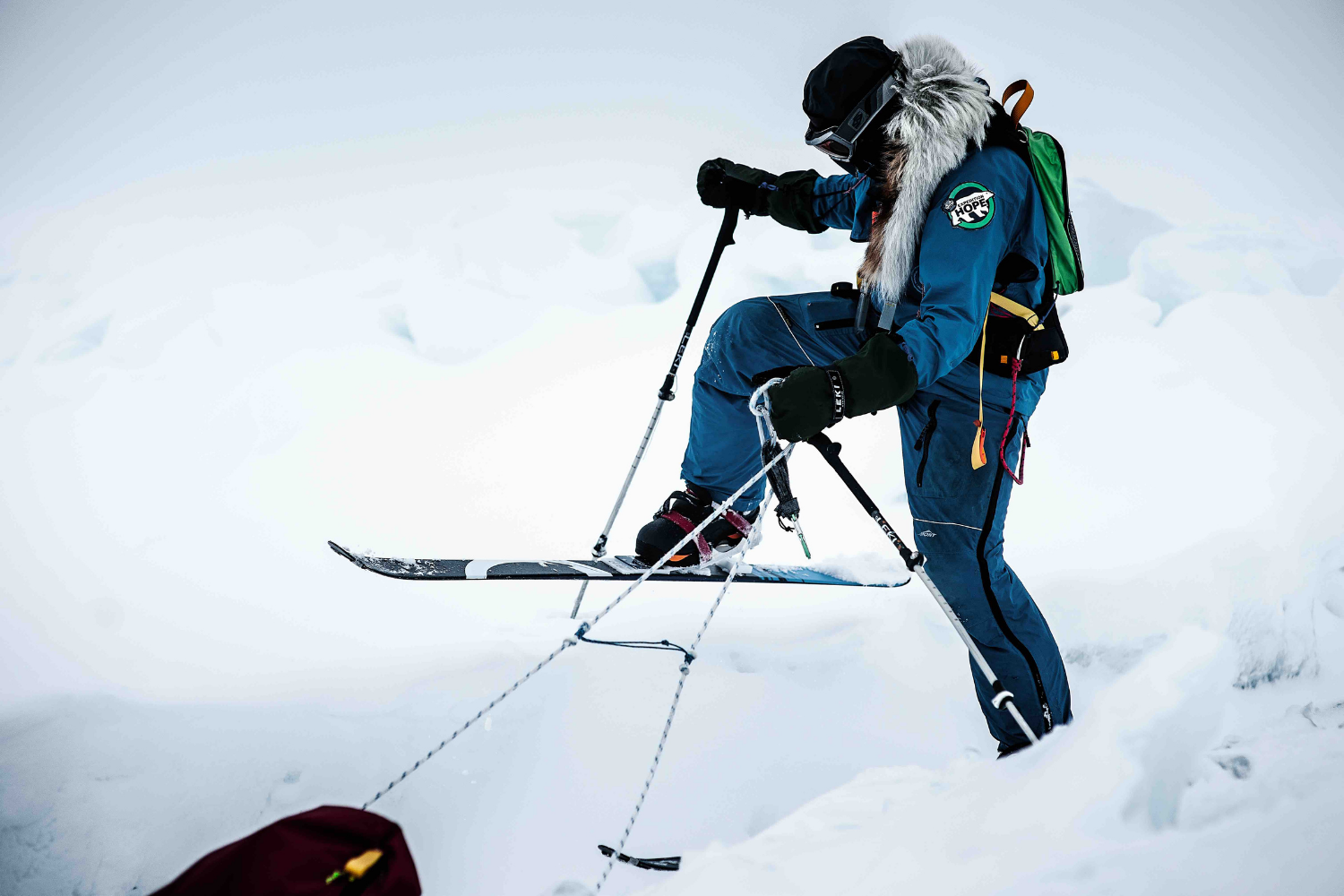
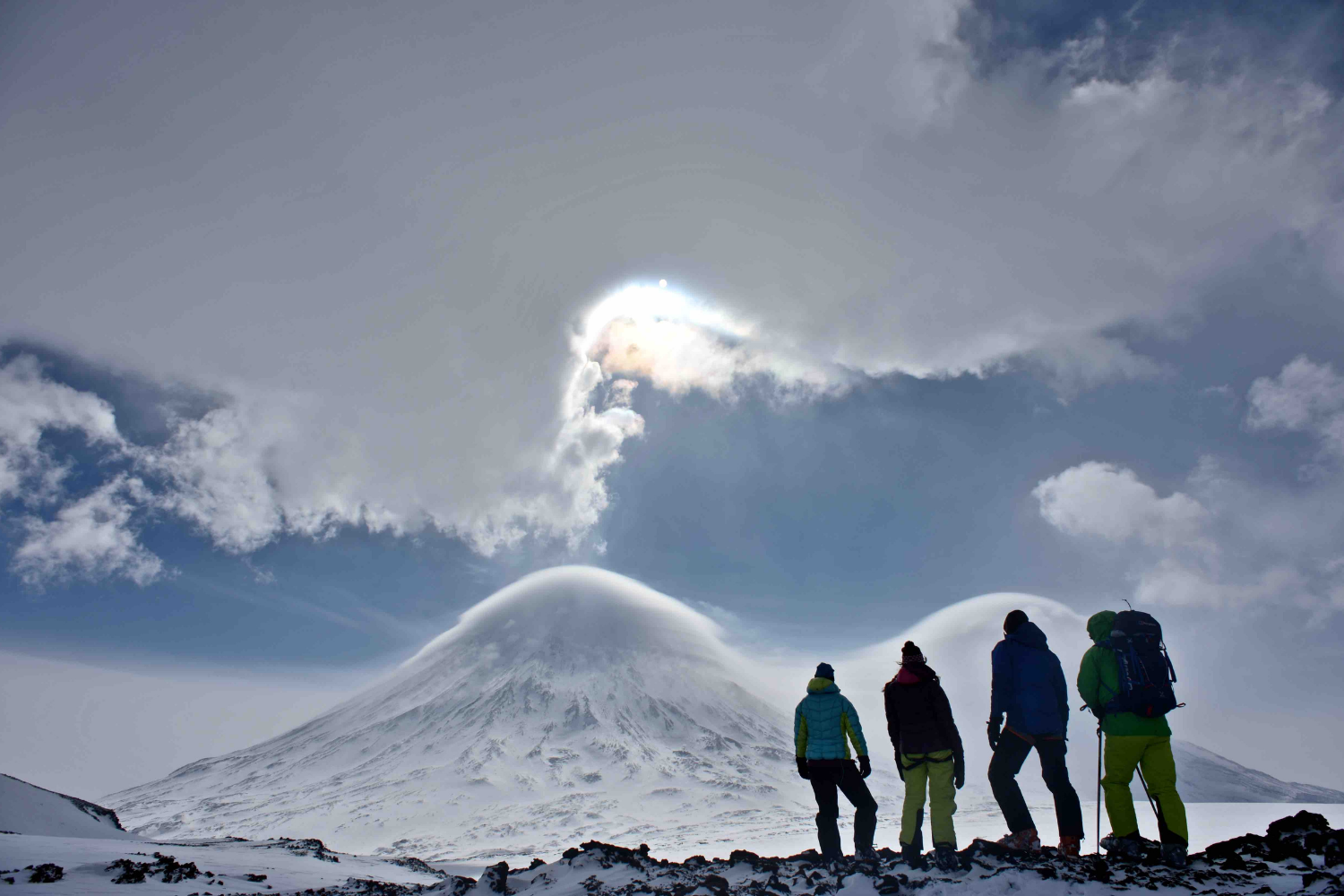
ES: Recently you posted some amazing photos of an encounter with wolves on Instagram — we’re dying to know more about what happened?
MH: We were at Eureka, the second-most remote weather station on earth, on Ellesmere Island, in Canada. I was lying on my chest in the middle of a fjord looking through my camera watching Pen [Hadow] drilling through the sea ice about 100m away. We were entirely alone. I suddenly thought ‘there’s something behind me’ and at the same time felt a tug on my trouser leg. I moved round very slowly and about arm’s length away at 3 o’clock was a wolf. They are lanky with very long legs — its head was probably up to my chest. I was lying looking up at it but strangely not at all scared — it was really bizarre. There was no adrenalin rush, I just thought ‘wow that’s beautiful’ and the wolf just seemed curious.
It was probably the single-most incredible interaction I’ve had with anything in my life. They were completely silent.
I later left the weather station on my own at midnight to check a piece of camera equipment I’d left out on test overnight. It was only about 100m from the building. I checked it was still working, turned to head back and heard wolves howling. It was completely different, completely primitive. I have probably never run 100m so fast in my life back into the building.
ES: You clearly care an enormous amount about the planet and the life on it. Do you ever get despondent?
MH: I’ve never thought about giving up, but a few years ago I did get overwhelmed. I had emptied my bank account to research the Last Ice Sentinels expedition from every possible angle and was gorging on scientific data about the Arctic Ocean and climate change, air pollution and so on… I was going to bed at night thinking about what was happening to the world and thinking ‘how do we stop this big machine?’. Then there’s mass extinction and the amount of species we’re losing every year and that’s horrific. There are too many people living on this planet without enough space for us to live or grow food — we’re living like a big plague of locusts.
I started to get climate anxiety and had to stop my research for a while because it was really chomping away at my psychological health.
ES: What do you say to climate sceptics?
MH: My biggest fantasy in life is that climate sceptics are right but that’s not going to happen. When I meet a sceptic, I ask if they have children and whether they’re willing to risk disagreeing with scientific data for the sake of their children’s future. If their answer is still yes, they don’t deserve to have children.
Any climate sceptic who thinks the problem is manufactured is kidding themselves — the data is all there and you can literally draw a line on a graph when the industrial revolution kicked off.
One way that I try to illustrate things is explain how when I’m in the Arctic melting ice for three of us to have cups of tea and rehydrate our food, that it takes about four hours on a petrol stove with a naked flame to melt six litres, because it is so cold. Imagine then that an area the size of Texas disappears forever every year in the Arctic and that gives some idea of how much energy is being used on the planet to have that effect.
It’s overwhelming and tiresome to read continually so it’s easy to say ‘sod that, I will have that steak, drive across Europe or just stop caring’ but we can’t afford to do that.
Thankfully there are not enough climate deniers so I don’t worry about them.
ES: How does the changing climate in the Arctic affect our skiing holidays in the Alps?
MH: It is climate change not ‘global warming’ — some places are getting warmer but others are getting colder, some wetter, some getting drier, windier, less windy and so on. Our weather comes from the interface between the sea and the atmosphere and because our seas are getting warmer, everything above (and below it) it is affected so the weather is becoming more unpredictable all over the planet which applies to mountains, too.
Traditionally there would be a long, cold snap at the beginning of the ski season and temperatures would gradually rise before spring arrives. But right now we’re getting spring temperatures in the middle of winter which is upsets the snow balance, snowfall and the surface it lands on making everything more unpredictable. It’s a whole domino effect.
On top of this, when atmospheric carbon comes down in the snow you get this black pepper effect which affects heat absorption and by proxy speeds up melt. That’s happening over the Arctic Ocean and on the Russian side the tundra has been on fire, with huge forest fires in the Taiga forests in Alaska — and must be happening in the Alps as well.
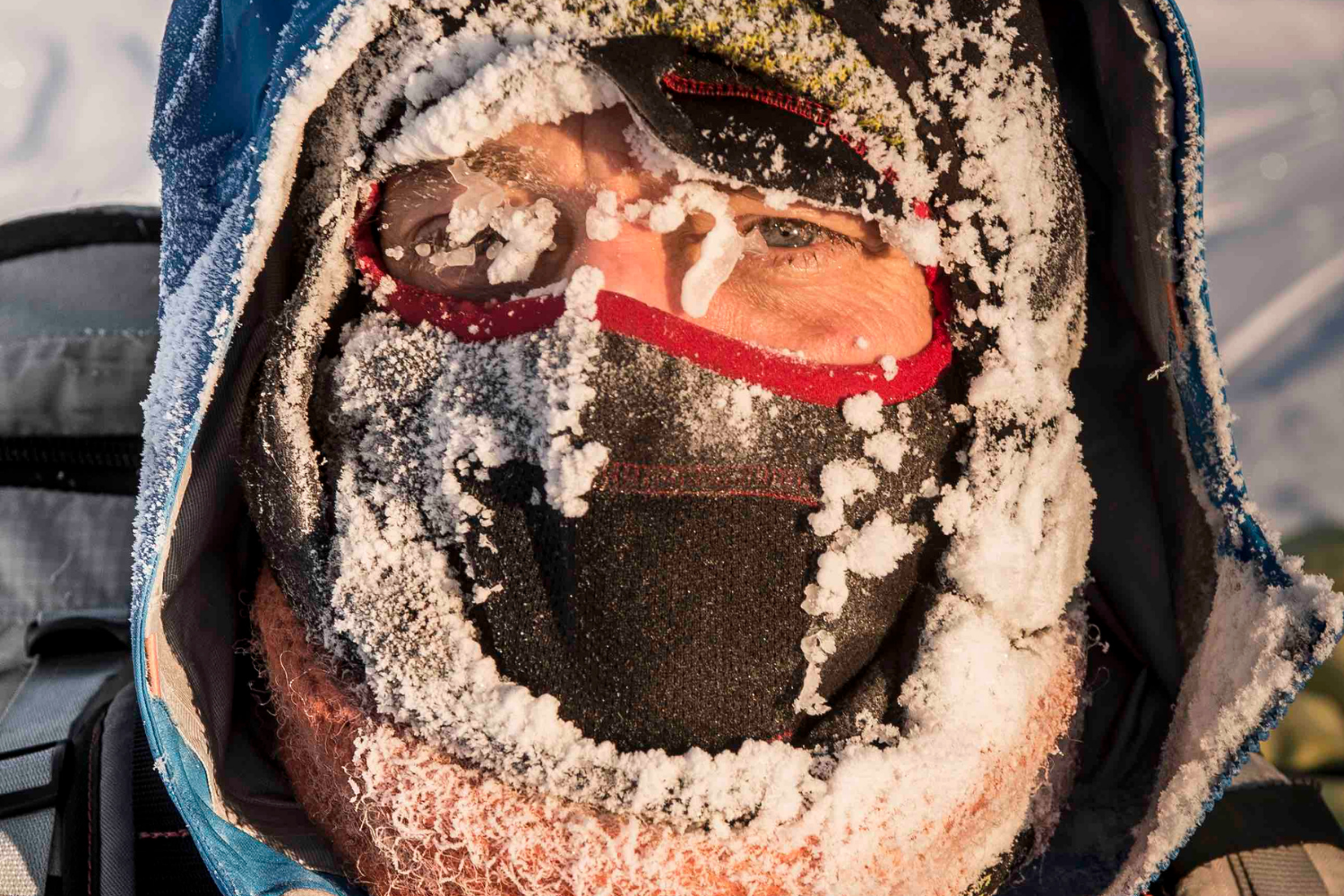
I do everything in moderation. That’s all you have to do, if everyone did everything in moderation everything would be a lot better
ES: How and when did you learn to ski?
MH: I’ve been cross-country skiing for years but how I learnt to downhill ski is quite a funny story — though it totally goes against my ethics today. In 2013 I had a call from Berghaus asking if I was free in about a months’ time to go and photograph that winter’s kit on a ski expedition in Kamchatka, Russia. Julie Pickering wanted to do the first splitboard ascent of Klyuchevskaya Sopka — the second-highest active volcano in the world, at just under 5000m.
They asked if I could ski and I said yes. I put the phone down and straight away went to Chamonix for five really long, intensive days of instruction on what I’d call ‘survival skiing’. I came back absolutely knackered and a few days later flew to Kamchatka to do this ski touring descent!
ES: How do you spend your down time — do you go on holiday?
MH: I don’t feel the need to take holidays because I get so much from my travel photography and expeditions — I don’t come back at any point and feel ‘oh my god I need a holiday’. If I go away anywhere I somehow turn it into work.
My last holiday was to a friend’s wedding on the west coast of America. Not far from there was a really interesting guy called Professor Peter Eisenburger, a physicist who used to work for Exxon. He now has a company called Global Thermostat which does carbon sequestration which is pulling out CO2 from the atmosphere mechanically, which I went to see. He’s invented this solar-powered machine that is completely carbon negative and says if there are a million of them around the world, in the next 38 years they can pull out 98 billion tonnes of carbon from the atmosphere to get us back environmentally to where we were 200 years ago. From that point on we can use these machines as a kind of global thermostat to regulate the temperature on earth. People are doing it already, though it’s not really common knowledge. That was my last holiday!
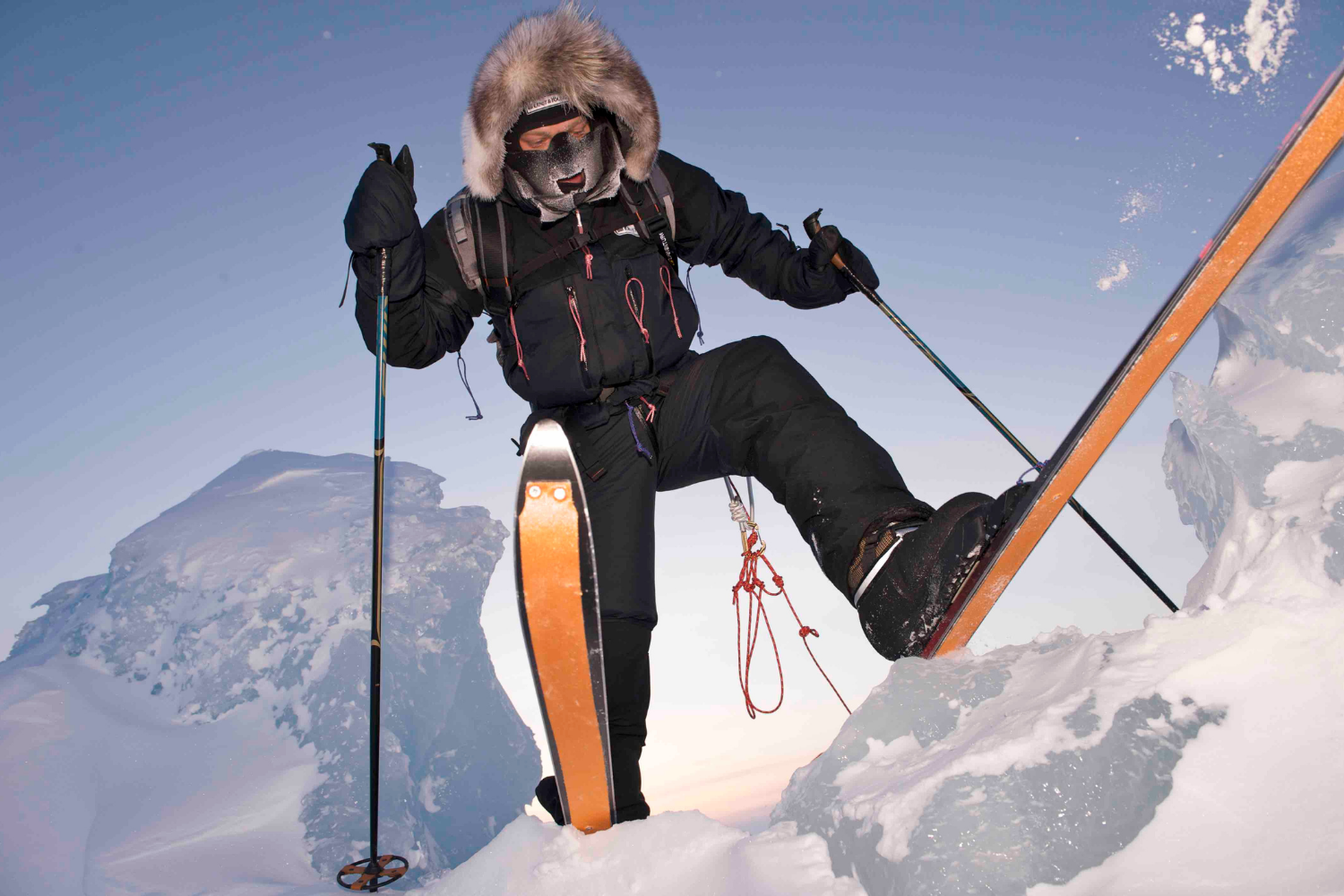
ES: We’re delighted that you wanted to become an ambassador for EcoSki, but what prompted that decision?
MH: I’m really impressed with what Ecoski is doing. The ski industry can be elitist because it’s an expensive hobby and some folk can be shielded from the effects of climate change — it’s winter and cold! If people in that industry can give more thought to what they’re buying, how they’re travelling and what they do in the mountains, it can only be healthy.
A little effort can go a long way.
Haglöfs are the clothing sponsor for the Last Ice Sentinels expedition and have made all our clothing using existing materials that were hanging around the factory. By ripping apart and repurposing jackets and fleeces they have increased efficiency of the original material to 98%. Normally when you cut a jacket from a piece of cloth, the efficiency of that material is really low, around 53% or something.
ES: Finally, given everything you know, how fanatical are you about what you do and how you live in your everyday life?
MH: I try to keep my life as environmentally healthy as possible but I’m not religious about everything I do. I have a diesel Land-Rover, but I’m its fifth owner and it was built 60 miles from here, so if I’m not driving it someone else would be. Plus I can’t afford an electric car at the moment. A few years ago I swapped long-distance driving for the train, unless I have to carry stuff.
I would think twice about jumping on a plane to Australia or New Zealand — although I’d love to go there I’m not sure I would any more. If I was doing more travel photography jobs I’d factor in carbon offsetting everything I did.
At home I conserve water and electricity as much as I can; I put a jumper on rather than turn up the thermostat. I try to avoid buying anything plastic where practical but of course I have computer monitors, a TV, my fridge is plastic – I can’t remove everything from my life but I am definitely plastic-conscious. I only buy clothes when old things wear out — I don’t get this season’s colour or cut, none of that rubbish.
I eat meat sometimes – I do everything in moderation. That’s all you have to do, if everyone did everything in moderation everything would be a lot better.
